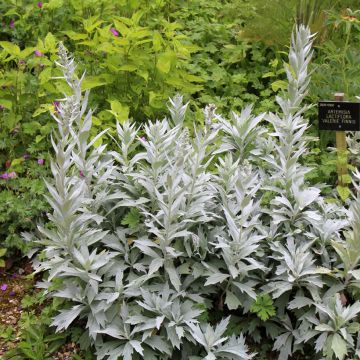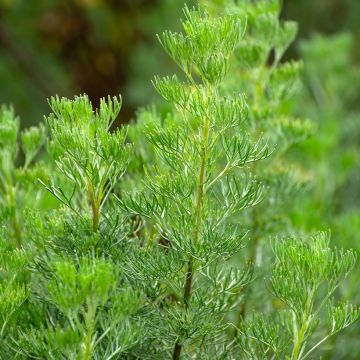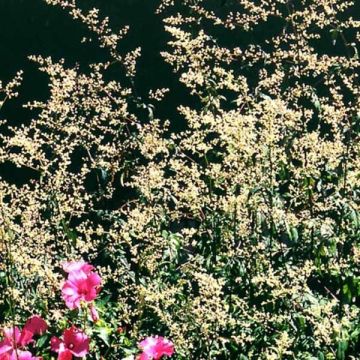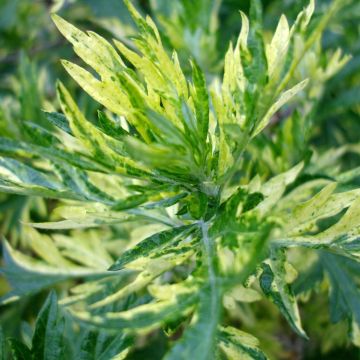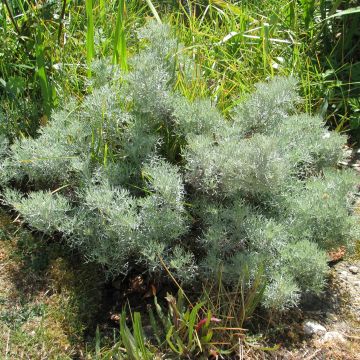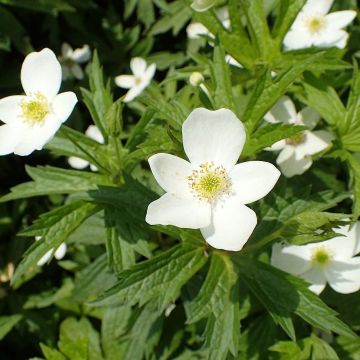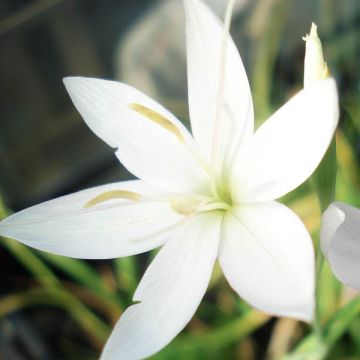

Artemisia lactiflora Jim Russell


Artemisia lactiflora Jim Russell
Artemisia lactiflora Jim Russell
Artemisia lactiflora Jim Russel
White Mugwort, Ghostplant
This item cannot be shipped to the selected country
Delivery charge from €5.90
Delivery to Corse prohibited
More information
Schedule delivery date,
and select date in basket
This plant carries a 12 months recovery warranty
More information
We guarantee the quality of our plants for a full growing cycle, and will replace at our expense any plant that fails to recover under normal climatic and planting conditions.
From €5.90 for pickup delivery and €6.90 for home delivery
Express home delivery from €8.90.
Delivery to Corse prohibited: UE law prohibits the import of this plant from mainland France to Corse as part of the fight against Xylella fastidiosa. Please accept our sincere apologies.
More information
Does this plant fit my garden?
Set up your Plantfit profile →
Description
The Artemisia lactiflora 'Jim Russell' is the most elegant of the Chinese artemisias: with its black and arched stems laden with a feathery flowering of pure white, dominating its finely cut foliage until late summer, this tall, airy perennial that comes alive in the wind. Plant it at the back of the border in a wild and romantic style, with tall asters, queens of the meadow or goldenrods.
Artemisia lactiflora is a plant species native to western China and belongs to the large family of Asters. Unlike many other artemisias, this plant prefers relatively cool and moist soils, while it dislikes hot environments. 'Jim Russell' is a particularly decorative horticultural selection with a flexible habit. Its white flowering contrasts with the black floral stems, making it even more attractive.
It is a tall herbaceous perennial that quickly and readily forms a beautiful shrub reaching a height of 1.40m (5ft) when in flower with a width of 70 cm (28in). Its habit is very bushy. The stems bear decorative and aromatic finely cut foliage, composed of significantly finely cut leaves of medium green colour. Flowering takes place from July-August to October. Above the foliage of the long, dark and arched floral stems, there are long, paniculate branches which are somewhat loose and adorned with many small white bell-shaped flowers. Artemisia 'Jim Russell' is a hardy and deciduous plant that goes dormant in late autumn, with its vegetation completely drying up. It then reappears in spring.
This graceful, poetic and unpretentious plant is perfect for a wild-style country garden and in all borders where naturalness prevails over rigidity. It also integrates well into a minimalist-style setting alongside grasses. Delicately exotic, it brings a lot of lightness and verticality to flower or shrub borders. Chinese artemisia 'Jim Russell' pairs well with Sneezeworts, tall asters, wood chervil (Anthriscus sylvestris Ravenswing), or even goldenrods (Solidago Golden Mosa).
Artemisias are known for their healing properties in both Western and Chinese medicine. In Chinese medicine, they are compressed and rolled to heat specific acupuncture points. Artemisias are commonly associated with Absinthe or the Green Fairy in our culture. Although Absinthe had a bad reputation, it has regained popularity since its ban was lifted.
Report an error about the product description
Artemisia lactiflora Jim Russell in pictures




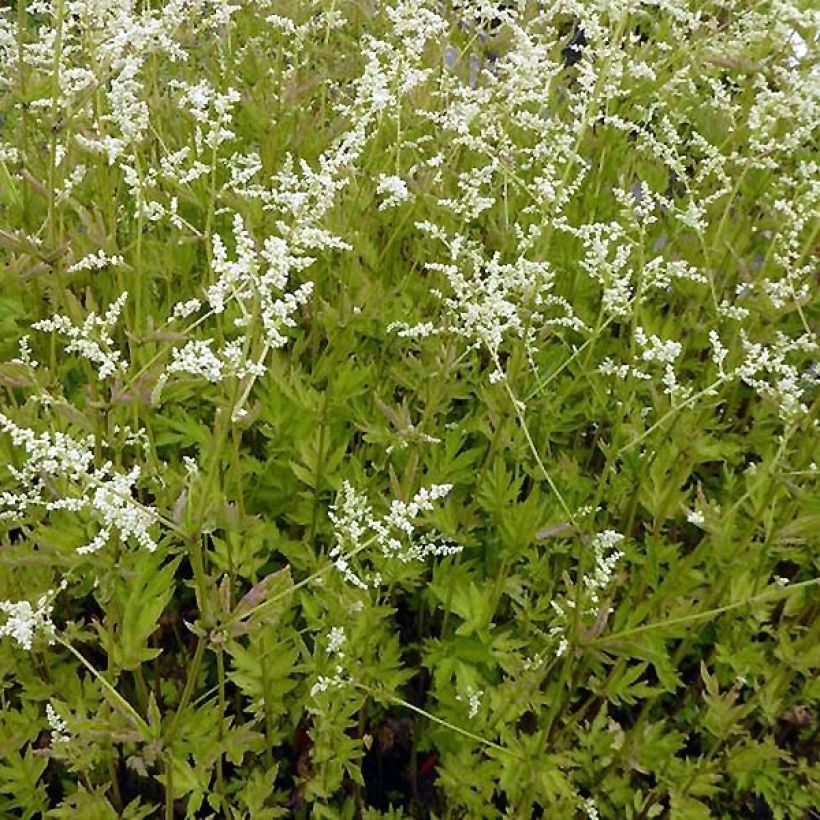

Flowering
Foliage
Plant habit
Botanical data
Artemisia
lactiflora
Jim Russel
Asteraceae
White Mugwort, Ghostplant
Cultivar or hybrid
Other Artemisia
Planting and care
Artemisia lactiflora is a plant that likes moist and rich soil. It can grow well in full sun or partial shade but needs protection from direct sunlight that can harm it. Compared to similar plants, it doesn't cope well in poor and dry soils. However, it is a tough plant that can withstand cold winters. To keep it healthy, it's best to trim it regularly in winter. Just cut back the dry stems, and by spring, two or three new shoots will produce a beautiful plant by autumn. Remember to remove any dry vegetation at the end of winter.
Planting period
Intended location
Care
This item has not been reviewed yet - be the first to leave a review about it.
Summer flowering perennials
Haven't found what you were looking for?
Hardiness is the lowest winter temperature a plant can endure without suffering serious damage or even dying. However, hardiness is affected by location (a sheltered area, such as a patio), protection (winter cover) and soil type (hardiness is improved by well-drained soil).

Photo Sharing Terms & Conditions
In order to encourage gardeners to interact and share their experiences, Promesse de fleurs offers various media enabling content to be uploaded onto its Site - in particular via the ‘Photo sharing’ module.
The User agrees to refrain from:
- Posting any content that is illegal, prejudicial, insulting, racist, inciteful to hatred, revisionist, contrary to public decency, that infringes on privacy or on the privacy rights of third parties, in particular the publicity rights of persons and goods, intellectual property rights, or the right to privacy.
- Submitting content on behalf of a third party;
- Impersonate the identity of a third party and/or publish any personal information about a third party;
In general, the User undertakes to refrain from any unethical behaviour.
All Content (in particular text, comments, files, images, photos, videos, creative works, etc.), which may be subject to property or intellectual property rights, image or other private rights, shall remain the property of the User, subject to the limited rights granted by the terms of the licence granted by Promesse de fleurs as stated below. Users are at liberty to publish or not to publish such Content on the Site, notably via the ‘Photo Sharing’ facility, and accept that this Content shall be made public and freely accessible, notably on the Internet.
Users further acknowledge, undertake to have ,and guarantee that they hold all necessary rights and permissions to publish such material on the Site, in particular with regard to the legislation in force pertaining to any privacy, property, intellectual property, image, or contractual rights, or rights of any other nature. By publishing such Content on the Site, Users acknowledge accepting full liability as publishers of the Content within the meaning of the law, and grant Promesse de fleurs, free of charge, an inclusive, worldwide licence for the said Content for the entire duration of its publication, including all reproduction, representation, up/downloading, displaying, performing, transmission, and storage rights.
Users also grant permission for their name to be linked to the Content and accept that this link may not always be made available.
By engaging in posting material, Users consent to their Content becoming automatically accessible on the Internet, in particular on other sites and/or blogs and/or web pages of the Promesse de fleurs site, including in particular social pages and the Promesse de fleurs catalogue.
Users may secure the removal of entrusted content free of charge by issuing a simple request via our contact form.
The flowering period indicated on our website applies to countries and regions located in USDA zone 8 (France, the United Kingdom, Ireland, the Netherlands, etc.)
It will vary according to where you live:
- In zones 9 to 10 (Italy, Spain, Greece, etc.), flowering will occur about 2 to 4 weeks earlier.
- In zones 6 to 7 (Germany, Poland, Slovenia, and lower mountainous regions), flowering will be delayed by 2 to 3 weeks.
- In zone 5 (Central Europe, Scandinavia), blooming will be delayed by 3 to 5 weeks.
In temperate climates, pruning of spring-flowering shrubs (forsythia, spireas, etc.) should be done just after flowering.
Pruning of summer-flowering shrubs (Indian Lilac, Perovskia, etc.) can be done in winter or spring.
In cold regions as well as with frost-sensitive plants, avoid pruning too early when severe frosts may still occur.
The planting period indicated on our website applies to countries and regions located in USDA zone 8 (France, United Kingdom, Ireland, Netherlands).
It will vary according to where you live:
- In Mediterranean zones (Marseille, Madrid, Milan, etc.), autumn and winter are the best planting periods.
- In continental zones (Strasbourg, Munich, Vienna, etc.), delay planting by 2 to 3 weeks in spring and bring it forward by 2 to 4 weeks in autumn.
- In mountainous regions (the Alps, Pyrenees, Carpathians, etc.), it is best to plant in late spring (May-June) or late summer (August-September).
The harvesting period indicated on our website applies to countries and regions in USDA zone 8 (France, England, Ireland, the Netherlands).
In colder areas (Scandinavia, Poland, Austria...) fruit and vegetable harvests are likely to be delayed by 3-4 weeks.
In warmer areas (Italy, Spain, Greece, etc.), harvesting will probably take place earlier, depending on weather conditions.
The sowing periods indicated on our website apply to countries and regions within USDA Zone 8 (France, UK, Ireland, Netherlands).
In colder areas (Scandinavia, Poland, Austria...), delay any outdoor sowing by 3-4 weeks, or sow under glass.
In warmer climes (Italy, Spain, Greece, etc.), bring outdoor sowing forward by a few weeks.


































